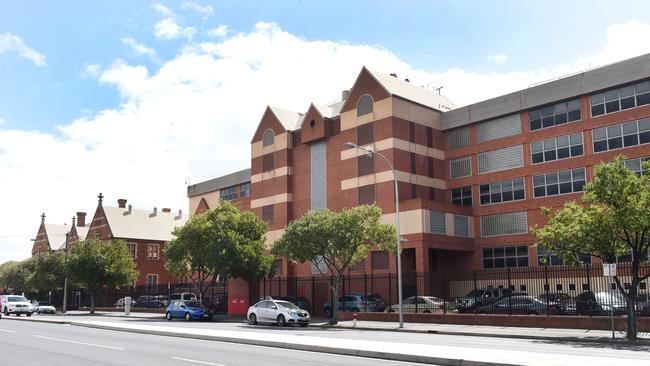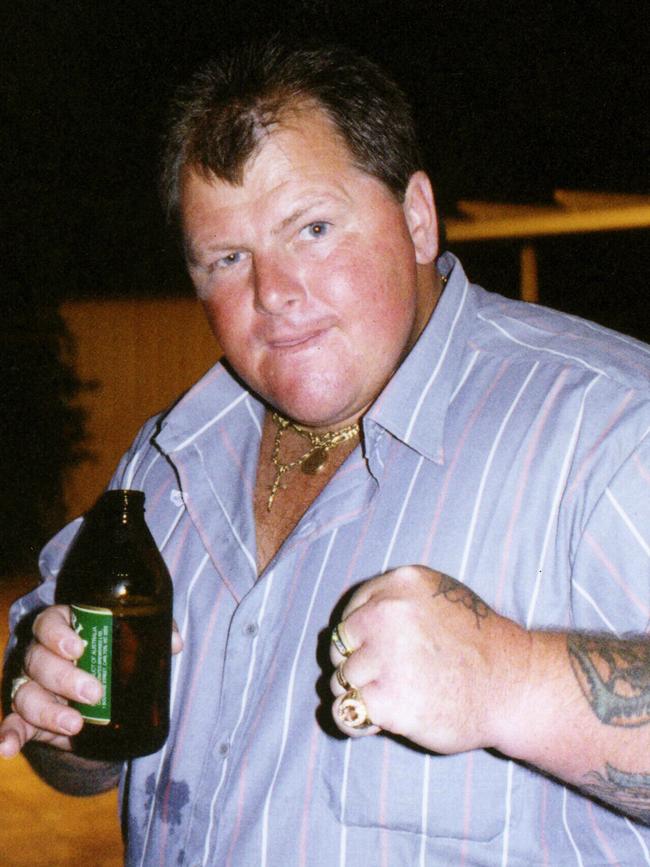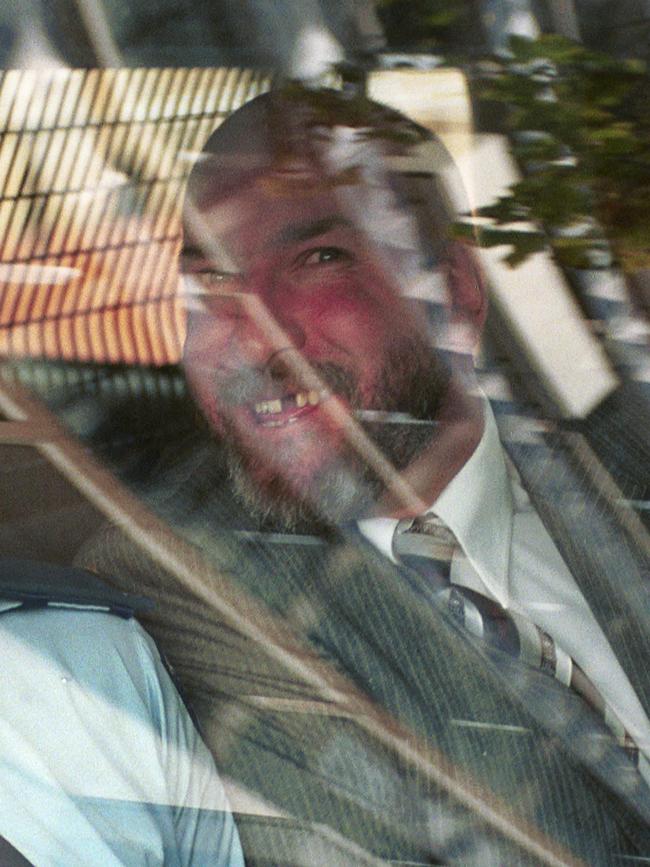Assault data exposes South Australia’s most dangerous prisons
The extent of violence inside SA’s nine prisons has been revealed as data showing thousands of assaults against inmates and officers is released for the first time.
Police & Courts
Don't miss out on the headlines from Police & Courts. Followed categories will be added to My News.
Hundreds of prisoners are committing assaults in the state’s prisons every year, data shows, as new information is revealed in the case of an unsolved prison murder.
Figures released under Freedom of Information reveal there have been 4032 assaults across the state’s nine prison sites over the past decade, but only 294 of them – 7.3 per cent – have been classed as serious.
The data shows 506 prisoner assaults against prison officers, including 34 considered as serious, while prisoner-on-prisoner violence accounted for 3526 assaults – including 260 serious.
A non-serious assault is regarded as an incident that does not require off-site medical attention and can be as benign as “a shove or a push, or even a strike with a hand or a foot,’’ according to Correctional Services chief executive officer David Brown.
A serious assault is an incident in which the victim requires medical assessment or treatment for injuries ranging from a cut to the face, break in the skin or a wound from a makeshift weapon.
SCROLL DOWN FOR ASSAULTS BROKEN DOWN BY PRISON & THREE SA PRISON MURDERS


One of the last major incidents of this nature involved an assault on accused murderer Sean Clive Phypers, 32, who was stabbed eight times in Yatala Labour Prison in June. While his injuries were not life threatening, he required surgery for several wounds.
And also in June, a remand prisoner died after allegedly being assaulted by his cellmate in Yatala – the first alleged murder in an SA prison for almost 30 years.
Verbal assaults are not included in the assault data, but are reported as an incident in “which a prisoner displays threatening or abusive behaviour.’’
Which is SA’s most dangerous prison?
The 10-year snapshot figures reveal the Adelaide Remand Centre consistently has the highest ratio of serious and non-serious assaults involving prisoners and prisoners against officers.
“The remand centre is the principal admitting prison for all new male prisoners in the Adelaide region, so while we may have 5000 to 6000 admissions to the correctional system in SA in any given year, the majority are metropolitan,’’ Mr Brown said.
“And all of those admissions, particularly in the last three years, go through the remand centre so they are the first contact with the correctional system for people who are coming off the street.
“Those people often present with unaddressed mental health issues, drug withdrawal and general anxiety and uncertainty about what it means to be in a high security correctional environment.
“And they are coming into contact with people they may have grievances with in the community when it comes to prisoner-on-prisoner incidents that we are assessing and trying to understand.
“Sometimes an altercation between two prisoners is about some grievance in the community that is brought inside and the remand centre is often the first time we become aware of that.’’
Mr Brown said Correctional Services worked closely with police to identify street and outlaw motorcycle gang members and locate them accordingly in prison to reduce conflict.
“We segregate where we need to, but we do not have a deliberate policy of segregating based on any gang affiliation – but we will segregate where we need to, based on risk’’ he said.
“And also the richness of the intelligence that is shared between law enforcement agencies gives us very good insight as to the risk that is presented. And we also provide very valuable insight back to the broader law enforcement sector.’’

The figures reveal Mount Gambier Prison has also consistently recorded high rates of assault both among prisoners themselves and prisoners against officers.
This is attributed to several factors, including its expanded size and the fact that besides housing a significant number of protected child sex offenders it has a large remand population.
“It has tripled in size in terms of the approved capacity, and there has been a change in profile over the past 10 years,’’ Mr Brown said.
“And it is an open campus facility and it is often the first time prisoners who are in custody for a longer period of time are tested with that self-directed day and often they fail that test and find themselves returned to high security and that is often borne-out in incidents.’’
The figures also reveal a high number of incidents at the Adelaide Women’s Prison, despite its comparatively low population.
“Not readily understood is the complexity of the people who are being brought into custody from the impact of trauma, the impact of mental health and borderline personality disorders are very prevalent in woman coming into custody,’’ Mr Brown said.
“That often plays out in aggressive behaviour, but quite often that looks very different to what you would experience in a male facility.
“And the AWP is the principal prison for all women in custody in SA and 55 per cent of them are on remand. Some of the characteristics in the ARC play out in the woman’s populations well.’’
What leads to prison violence?
Mr Brown conceded that the overcrowding of prisons “can be a factor that contributes to incidents in custody’’.
“We have not experienced peak prison population since March 2018, we have had some flexibility in the system since then. We are in a better position than say the five years prior to 2018 in terms of capacity,’’ he said.
“Eighty per cent of our prisoners in custody share their accommodation and for people who have poor impulse control and resolve issues with violence, you do see instances of violence in those circumstances.
“But likewise, you see it having a positive impact on wellbeing and preventing people from committing incidents of self-harm.’’
A likely factor in the drop in assaults in the 2021/22 period – by more than a quarter – may have been because of restrictions and isolation protocols in place during Covid ensured there were was less opportunity for prisoners to interact with each other.
What happens when a prisoner assaults someone?
Mr Brown said there was a strong, proactive reporting culture in the agency and each assault was taken “very seriously’’ and there was an expectation every prison officer would report an incident that occurred.
While more serious assaults could result in criminal charges following a police investigation, the vast majority of incidents were dealt with internally under the Correctional Services Act.
Those facing an internal charge faced a visiting tribunal, which had the power to put a range of sanctions in place. The most common was a financial penalty, but minor charges were often also dealt with by prison managers by invoking restrictions on activities or privileges.
In the 2020/21 and 2021/22 financial years, visiting tribunals dealt with 467 matters – just 40 of which were non-serious assaults. Other matters included possessing prohibited items and minor property damage.
In one minor assault case typical of those heard by the tribunal, a prisoner was fined $40 – the equivalent of a week’s wages – after pleading guilty to punching his cellmate repeatedly.
THREE SA PRISON MURDERS
Peter Fazzari
In all likelihood, Peter Fazzari did not feel a thing.
Asleep in his Cadell Training Centre cell as a fellow prisoner silently crept up beside him, his life ended instantly when a large carving knife was thrust into his brain.
The weapon was driven in with such force that it entered the rear of his skull, went through his brain and its tip exited his skull next to his right eyebrow and then penetrated his pillow.
It was no coincidence that Mr Fazzari, 56, was murdered the night before he was due to be released on parole on December 30, 1991. Detectives believe it was a planned hit with another prisoner paid to murder him.
Mr Fazzari had been serving a life sentence with an 11-year non-parole period after pleading guilty to murdering his brother Salvatore in October 1979.
Peter Fazzari had gone to his brother’s Waterloo Corner Rd looking for his wife Rosa and their children, who had moved into accommodation there. According to the Coroner’s report, Ms Fazzari and her children had been subjected to assaults by Peter Fazzari in what was described as “a violent marriage”.
After shooting his brother Salvatore in the chest at the Waterloo Corner property, Peter Fazzari surrendered at the Elizabeth police station.
For the first time, The Advertiser can reveal the identity of a key suspect in Mr Fazzari’s prison murder.
Detectives, at the time, uncovered information he may have been killed by another prisoner, drug dealer Les Knowles, and two other inmates may also have been involved. However, there was not enough evidence to charge anyone.


As is often the case in the criminal community, Mr Knowles would suffer the same fate almost five years later when he was executed in one of South Australia’s infamous bikie hit jobs.
In August 1996, Mr Knowles was working in his Lonsdale car repair workshop when hit man Gerald Preston walked in and asked for him by name and then opened fire. Mr Knowles and his employee Tim Richards were killed instantly and a third man injured by gunfire.
Preston, who is still serving a 32-year sentence and his driver Kevin Gillard, who has been released on licence in 2021, were arrested and convicted of the murders, which the Supreme Court heard were sanctioned by the Hells Angels.
A $200,000 reward is still available for information leading to a conviction in Mr Fazzari’s murder.
Anthony Trevor Tilley
Former police officer Anthony Tilley was stabbed to death in a ferocious attack in the kitchen at Yatala Labour prison in January 1995.
In a cold-blood attack fellow inmate Michael Barry Fyfe walked up to Tilley, who was serving a sentence for the rape of an Aboriginal woman at Port Augusta, from behind and thrust a carving knife into his lower back, lacerating his right kidney and dissecting his liver by twisting the blade several times.


Such was the ferocity of the attack, when ambulance officers were treating Tilley, a piece of his liver fell from the gaping wound onto the floor.
Fyfe, who has a shocking history of violent offending spanning four decades that includes several targeted attacks on convicted rapists, was convicted of Tilley’s murder the following year.
Earlier this year Fyfe, 61, who is serving a non-parole period of 45 years, was released from solitary confinement at Yatala after 28 years. He is now being housed at Port Augusta prison as part of his rehabilitation program.
Anthony Stone
Armed robber Anthony Wesley Stone was stabbed in a recreation yard at Yatala Labour Prison occupied by 90 other prisoners – and yet just one of them witnessed the attack.

Fellow prisoner James Fricker was charged with Stone’s October 1989 murder, with the brief of evidence relying largely on a statement provided by prisoner Kenneth Hill – who was among those in the recreation yard.
However, before Fricker, who was already serving a life sentence for murder at the time, could be put on trial, Mr Hill died in February 1992 while being held in protective custody at Yatala.
In April 1992, the murder charge against Mr Fricker was dropped in Adelaide Magistrates Court because the key Crown witness had died.
In September 1992, an inquest by then state Coroner Kevin Ahern into Mr Hill’s death found there were no suspicious circumstances and that he died of a brain haemorrhage.
A $200,000 reward is still available for information leading to a conviction in Mr Stone’s murder.




